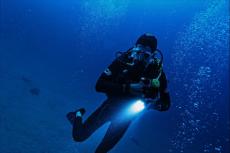First live sighting of elusive Sato's beaked whale
We now have a confirmed live sighting of the Sato's beaked whale species, several years after a paper describing the species was published.
For decades, Japanese whalers have known of the existence of a whale species that resembles the Baird’s beaked whale, but is smaller in size. It was only in 2019 that DNA samples taken from deceased whales were able to confirm their existence.
The new species was named Sato’s beaked whales, after researcher Hal Sato, who sent photos of deceased stranded individuals to Tadasu Yamada, curator emeritus at Japan’s National Museum of Nature and Science, in the early 2000s.
A paper describing this species was published in Scientific Reports in August 2019.
However, at the time, there was still not yet any confirmed sightings of a live individual of the species.
Until last summer.
Live sighting in summer 2021
That was when a group of researchers spotted 14 Sato's beaked whales in the Nemuro Strait, between Hokkaido, Japan and Russia's Kuril Islands.
According to an IFLScience article, three pods containing four to five individuals were spotted over a period of six days. To confirm the whales' identity, the researchers took a small skin sample from one of the animals for genetic analysis.
The sample was a perfect match to the previously sequenced DNA from of the species. The researchers subsequently wrote a paper on their findings that was published in the Marine Mammal Science journal on 13 May 2022.
Smaller than Baird's beaked whales, Sato's beaked whales grow up to nearly seven metres. Their colouration is darker than their closest relatives. They are elusive and live offshore, spending much of the time at depth to avoid killer whales, their main predator.
The IUCN's Red List describes the species as "near threatened" in 2020.



























